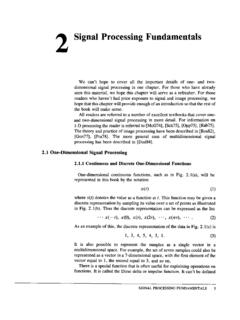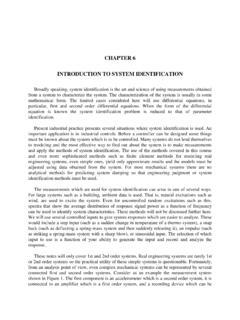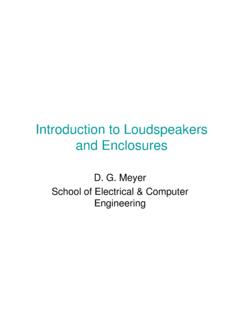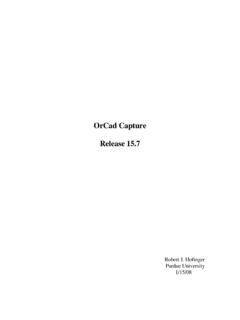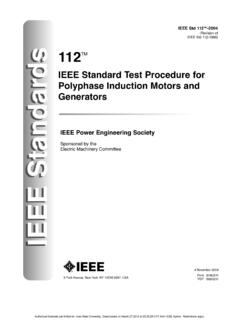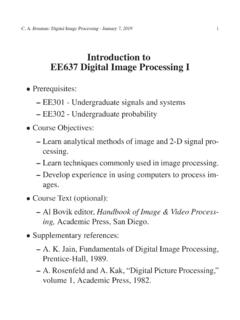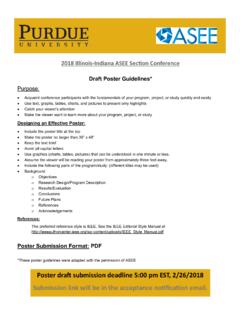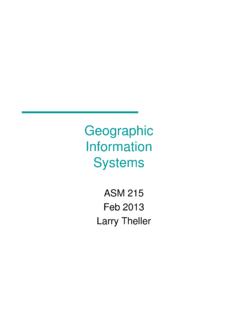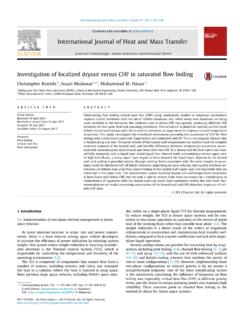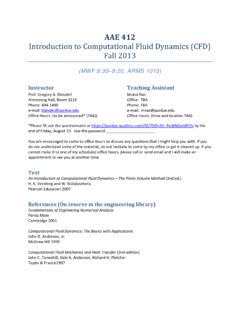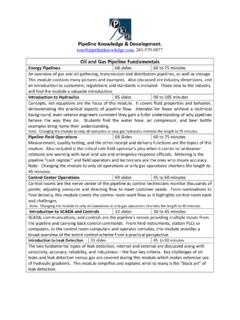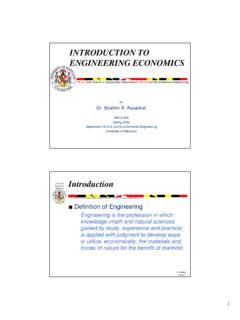Transcription of Fundamentals of Engineering (FE) CIVIL CBT Exam …
1 1 Fundamentals of Engineering (FE) CIVIL CBT Exam Specifications Effective Beginning with the January 2014 Examinations The FE exam is a computer-based test (CBT). It is closed book with an electronic reference. Examinees have 6 hours to complete the exam, which contains 110 multiple-choice questions. The 6-hour time also includes a tutorial and an optional scheduled break. The FE exam uses both the International System of Units (SI) and the US Customary System (USCS). Knowledge Number of Questions 1. Mathematics 7 11 A. Analytic geometry B. Calculus C. Roots of equations D. Vector analysis 2. Probability and Statistics 4 6 A. Measures of central tendencies and dispersions ( , mean, mode, standard deviation) B.
2 Estimation for a single mean ( , point, confidence intervals) C. Regression and curve fitting D. Expected value (weighted average) in decision making 3. Computational Tools 4 6 A. Spreadsheet computations B. Structured programming ( , if-then, loops, macros) 4. Ethics and Professional Practice 4 6 A. Codes of ethics (professional and technical societies) B. Professional liability C. Licensure D. Sustainability and sustainable design E. Professional skills ( , public policy, management, and business) F. Contracts and contract law 5. Engineering Economics 4 6 A. Discounted cash flow ( , equivalence, PW, equivalent annual worth, FW, rate of return) B.
3 Cost ( , incremental, average, sunk, estimating) C. Analyses ( , breakeven, benefit-cost, life cycle) D. Uncertainty ( , expected value and risk) 6. Statics 7 11 A. Resultants of force systems B. Equivalent force systems C. Equilibrium of rigid bodies D. Frames and trusses 2 E. Centroid of area F. Area moments of inertia G. Static friction 7. Dynamics 4 6 A. Kinematics ( , particles and rigid bodies) B. Mass moments of inertia C. Force acceleration ( , particles and rigid bodies) D. Impulse momentum ( , particles and rigid bodies) E. Work, energy, and power ( , particles and rigid bodies) 8. Mechanics of Materials 7 11 A.
4 Shear and moment diagrams B. Stresses and strains ( , axial, torsion, bending, shear, thermal) C. Deformations ( , axial, torsion, bending, thermal) D. Combined stresses E. Principal stresses F. Mohr's circle G. Column analysis ( , buckling, boundary conditions) H. Composite sections I. Elastic and plastic deformations J. Stress-strain diagrams 9. Materials 4 6 A. Mix design ( , concrete and asphalt) B. Test methods and specifications ( , steel, concrete, aggregates, asphalt, wood) C. Physical and mechanical properties of concrete, ferrous and nonferrous metals, masonry, wood, engineered materials ( , FRP, laminated lumber, wood/plastic composites), and asphalt 10.
5 Fluid Mechanics 4 6 A. Flow measurement B. Fluid properties C. Fluid statics D. Energy, impulse, and momentum equations 11. Hydraulics and Hydrologic Systems 8 12 A. Basic hydrology ( , infiltration, rainfall, runoff, detention, flood flows, watersheds) B. Basic hydraulics ( , Manning equation, Bernoulli theorem, open-channel flow, pipe flow) C. Pumping systems (water and wastewater) D. Water distribution systems E. Reservoirs ( , dams, routing, spillways) F. Groundwater ( , flow, wells, drawdown) G. Storm sewer collection systems 12. Structural Analysis 6 9 A. Analysis of forces in statically determinant beams, trusses, and frames B.
6 Deflection of statically determinant beams, trusses, and frames C. Structural determinacy and stability analysis of beams, trusses, and frames 3 D. Loads and load paths ( , dead, live, lateral, influence lines and moving loads, tributary areas) E. Elementary statically indeterminate structures 13. Structural Design 6 9 A. Design of steel components ( , codes and design philosophies, beams, columns, beam-columns, tension members, connections) B. Design of reinforced concrete components ( , codes and design philosophies, beams, slabs, columns, walls, footings) 14. Geotechnical Engineering 9 14 A. Geology B. Index properties and soil classifications C.
7 Phase relations (air-water-solid) D. Laboratory and field tests E. Effective stress (buoyancy) F. Stability of retaining walls ( , active pressure/passive pressure) G. Shear strength H. Bearing capacity (cohesive and noncohesive) I. Foundation types ( , spread footings, deep foundations, wall footings, mats) J. Consolidation and differential settlement K. Seepage/flow nets L. Slope stability ( , fills, embankments, cuts, dams) M. Soil stabilization ( , chemical additives, geosynthetics) N. Drainage systems O. Erosion control 15. Transportation Engineering 8 12 A. Geometric design of streets and highways B. Geometric design of intersections C.
8 Pavement system design ( , thickness, subgrade, drainage, rehabilitation) D. Traffic safety E. Traffic capacity F. Traffic flow theory G. Traffic control devices H. Transportation planning ( , travel forecast modeling) 16. Environmental Engineering 6 9 A. Water quality (ground and surface) B. Basic tests ( , water, wastewater, air) C. Environmental regulations D. Water supply and treatment E. Wastewater collection and treatment 4 17. Construction 4 6 A. Construction documents B. Procurement methods ( , competitive bid, qualifications-based) C. Project delivery methods ( , design-bid-build, design build, construction management, multiple prime) D.
9 Construction operations and methods ( , lifting, rigging, dewatering and pumping, equipment production, productivity analysis and improvement, temporary erosion control) E. Project scheduling ( , CPM, allocation of resources) F. Project management ( , owner/contractor/client relations) G. Construction safety H. Construction estimating 18. Surveying 4 6 A. Angles, distances, and trigonometry B. Area computations C. Earthwork and volume computations D. Closure E. Coordinate systems ( , state plane, latitude/longitude) F. Leveling ( , differential, elevations, percent grades)
